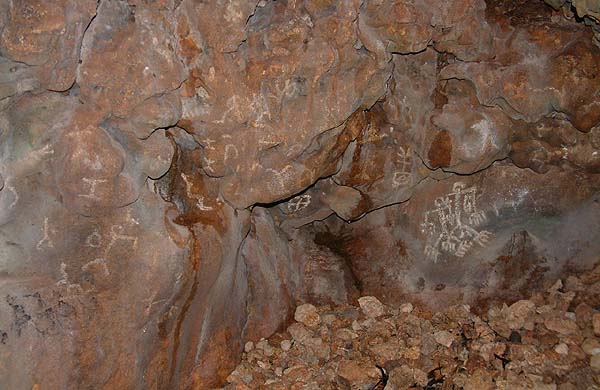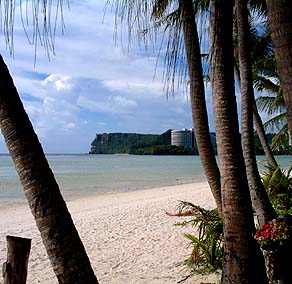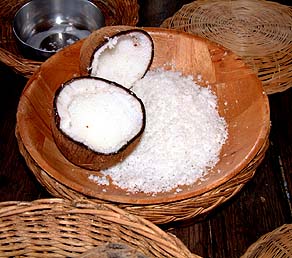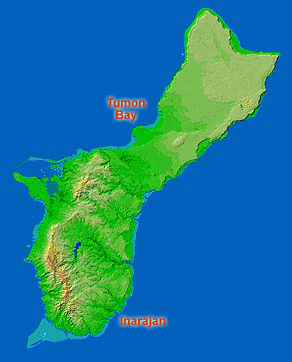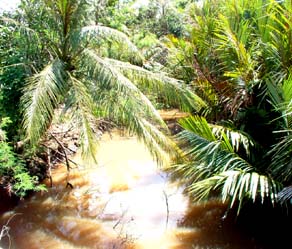 |
 |
 |
 |
||||
|
|
|
|
|
|
|
|
|
|
|
|||||||
|
|
|
|
|
|
|
"Chief Gådao is a legendary chief of Inarajan," tells Rufo Lujan. "He is supposed to be a very strong chief. And there was another chief in Tumon Bay, which was a large village in ancient times, perhaps a principle settlement. This one particular chief by the name of Malaguaña (or Mataguaña) thought that he was the strongest chief on this island. He was very proud of his strength and prowess."
|
||
|
|
||
|
"And then Malaguaña heard rumors that there was a man called Gådao in Inarajan, who was said to be very strong. So Malaguaña decided that he was going to go and challenge this man, because he did not want anybody stronger than himself. "He paddled his canoe to Inarajan, and landed on the beach. And he met a man who, unbeknownst to him, happened to be Chief Gådao. And he told the man, ‘My name is Malaguaña, I am chief of Tumon, and I am the strongest man on Guam. And I heard that there was a chief by the name of Gådao who is strong. I would like to meet this man and challenge him to a fight'."
|
Tumon Bay.
|
|
|
"Gådao told him ‘Friend, it’s almost supper time, and I have coconut crabs which I will have my wife cook, and we can have dinner, and then I will show you this man, I will take you to Gådao.’ "Chamorros traditionally cook coconut crab in coconut milk. So Gådao needed some coconuts. He looked up a tree, saw that there were some ripe nuts, and he shook the tree and the nuts dropped off. And then he decided that rather than grating it, he would just squeeze the milk out. So he took the nuts and just squeezed them and--whoosh!--milk came out. "So Malaguaña was saying, 'If this man is not Gådao’—and normally the chief would be the strongest man in the village, not necessarily the wisest, but the strongest—‘I wonder what Gådao would be like’." |
|
"They went to Gådao's home and Gådao’s wife cooked the coconut crab, and they had supper. And then Gådao said, ‘Okay, now I will take you to see this man Gådao.’ And Malaguaña said ‘Well, you know it’s getting late, and home is quite a ways, so I need to go home before dark.’ And Gådao said, ‘Well, let me help you paddle.’ "So they got into the canoe and started paddling, and Malaguaña was paddling to go forward. Gådao sat in the stern of the canoe, but he reverse-paddled, so they were paddling the canoe in opposite directions. "But because they were very strong men, the canoe broke in half. And Malaguaña didn’t realize the canoe was broken, so he paddled. When he got to Tumon and he looked back, Gådao was in the other half of his canoe."
|
|
|
|
"As Malaguaña is rowing and rowing as fast as he can," Therese adds, "he doesn’t realize the other half is gone. Here’s Gådao going around the corner, around the bend, laughing his head off because Malaguaña is just rowing as fast as he can, and he doesn’t realize he has only half a canoe!" "But because of the strength of Gådao," Rufo concludes, "when he reverse-paddled, if you go to Inarajan today, you can see the channel dredged by Gådao’s canoe. This is not a river. This is the land that was gouged out by his canoe. The force was such that it just dredged a channel, it gouged the land and created that part of the village."
|
|
|
|
|
|
|
"When I tell this story to my students, all of the kids just laugh" Therese muses. "They say, ‘Mrs. Pangalinan, I don’t think that can happen, you can’t row half a canoe and not sink.’ I tell them, 'You can if you keep moving fast. Don’t stop, just keep on going.' Gådao was a pretty strong guy at that time. And so, in the caves they say that he drew the story of how he out-witted this chief from the north."
|
||
|
|
||
|
|
|
|
|
|

|
| Inarajan Home | Map Library | Site Map | Pacific Worlds Home |
|
|
|
|
|
|
|
|||
| Copyright 2003 Pacific Worlds & Associates • Usage Policy • Webmaster |
|||
